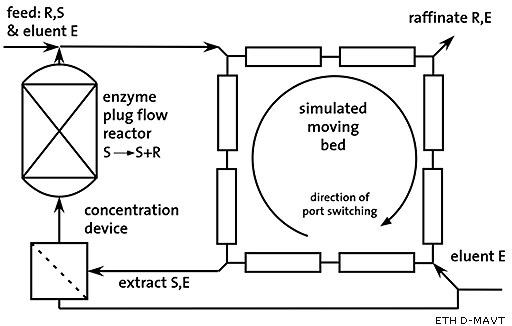|
ETHistory 1855-2005 | Rückblicke | Departemente | MAVT | none | none | Bioprocess Laboratory BPL |
|
|
Wichtiger Hinweis:
Diese Website wird in älteren Versionen von Netscape ohne graphische Elemente dargestellt. Die Funktionalität der Website ist aber trotzdem gewährleistet.
Wenn Sie diese Website regelmässig benutzen, empfehlen wir Ihnen, auf Ihrem Computer einen aktuellen Browser zu installieren.
Weitere Informationen finden Sie auf
folgender Seite.
Important Note:
The content in this site is accessible to any browser or Internet device,
however, some graphics will display correctly only in the newer versions of
Netscape.
To get the most out of our site we suggest you upgrade to the latest
Netscape.
More information
BPL topics revolve around the central theme of integrating modularized bioprocesses: Projects have been initiated in the area of intelligent fermentation strategies for the production of catalyst-inhibitory and labile bioproducts and in the area of integrated biotransformations (see figure) – either with advanced in situ product separation techniques or with large reaction networks for the production of complex molecules.

Though biocatalysts are capable of carrying out the most complex transformations of molecules, such impressive properties are frequently difficult to exploit: for example, a product that we would want to accumulate to high concentrations inhibits the biocatalyst, a desired intracellular product cannot cross the membrane, or a particularly useful enzymatic reaction is thermodynamically limited in yield. These problems severely limit the scope of products that can be obtained at present. However, they can be addressed by conceptionally very similar, forward-engineering approaches over a large range of scales: by the rational integration of modules of specific functions. This can be on reactor scale where for example a fermenter is integrated with an on-line extraction-module to remove inhibitory compounds (“integrated bioprocessing”). But the same principle can be used with multi-enzyme systems that we use in order to produce highly complex molecules that are not available from fermentations. In such multi-reaction “modules”, the ambition to rival the cell in its capacity to build complex structures needs to be accompanied by another (multi-enzyme) “module” that can – for example - provide the required energy or reducing power. This multi-scale approach defines the scope of modern bioprocessing.
|
|